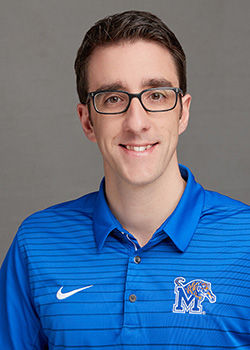From battling the draft to the pandemic
- Lucas Finton
- Oct 23, 2020
- 3 min read
In the 1970s, Edward Stanbury’s father pulled him aside to talk about the potential of leaving his life behind as a high school athlete. At the time, Stanbury was eligible to be drafted to fight in the ongoing Vietnam War--an occurrence that happened to his father only 15 years earlier when he was drafted to fight in the second World War. Now, as the head coach of the same team he ran for almost 50 years ago, he has come face to face with another threat to the safety of his team.

“We are struggling a little bit, COVID has made its impact on our team this year,” Stanbury said regarding the impact that the virus has had on the season. “We had to switch to virtual training and we weren’t sure what our limitations were for that yet. We lost two weeks of official training that way, which was crucial because it is so much harder to train without a group.”
Since the first incident, which sidelined the entire team, another batch of cases had sprung up that sidelined five of his seven top runners.
“We had another young man--one of our lead runners--contract COVID from his mother who had just come back from a wedding in Texas,” he said. “They were both sick and, when they did the contact tracing, five of our varsity runners and one of our junior varsity runners had to sit out. That was devastating to our team.”
Even with the complications, the training never stopped. About 1,800 miles away, in Butte, MT., Zach Kughn has been leading his team through the rocky remains of a cross country season. Kughn, a former pupil of Stanbury at Grand Blanc High School, is now the head coach at Montana Tech, an NAIA school in the Frontier Conference.
The team is one of the few schools in college athletics that is still participating in a season, which is the first in Montana Tech’s history according to Kughn.
“We have a new program and this is the first time we have ever had a team so we are going through a lot of things for the first time,” he said. “That’s one advantage that we have had through COVID. It’s all new to us instead of being stuck in our ways, so we have just been rolling with it and this is how it’s always looked for us.”
For Kughn, there is a lot of emotion involved with the sport that only gets

compounded with such uncertainty. On the day of a race, emotions are running high and, when that event gets canceled, there is a “this lame lull.” In order to keep his runners optimistic and prepared, he likes to put the uncertainty into a context that is easier for him and his athletes to digest.
“People have made a lot of analogies between running and the pandemic,” he said. “But the reality is that we started the race and didn’t know how long it would be. Back in March, if you thought it was a mile and was going to be over in April, you were wrong. Even if you thought it was a marathon and be over in six months, you were still wrong. We are still out there running it and don’t know what pace to go or how much fuel to take until the end. It might be an [ultramarathon], 50 miler, 100 miler or we could be running across the whole continent. Who knows?”
Such a monumental event in human history might be new to his athletes, but Stanbury takes comfort in having lived through one before and being the son of someone who had lived through one as well.
“It’s not that abnormal to see things like this when you look back at other generations,” he said. “[My father] was racing at the state meet and then a few months later was fighting the Japanese in the Pacific. Those kids had four years of their lives interrupted, some of them never came home. COVID is a different variation of the same distraction that has happened in history. Years from now everyone will look back and say, ‘Remember during COVID when we didn’t have sports?’”



Comments